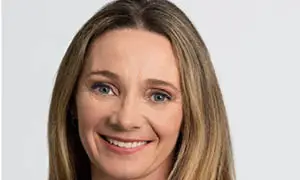No More Wait Lists: Closing the gaps in the health care system
When Josephine Marchese and her family couldn’t find a doctor willing to listen to her father and help alleviate his pain and suffering, they discovered a problem: waitlists. As the search continued for timely access to medical care, her father passed away.
Inspired by this event, Josephine started NoMoreWaitLists in November 2020, with the idea that there “had to be a better way of doing things.” NoMoreWaitLists connects patients to appointment openings by listing clinics and health organizations with availability. These organizations register with NoMoreWaitLists and then create appointment openings on the website. As the slots are filled, the clinics and health organizations are able to make themselves unavailable. Josephine says this allows these businesses to “connect with new clientele each time.”
NoMoreWaitLists connects to health associations such as the Canadian Counselling Association, where anyone can find them as a listed resource to fill appointment openings. Josephine says dealing with these associations guarantees the legitimacy of the professionals who have a profound effect on the quality of health care patients receive.
So far, there has been a favourable response to the business as there are few ways for patients to find appointment openings. A policy brief published by SecondStreet—Policy Brief: Died on a waitlist (2020)—discovered that at least 3,841 patients died between 2018 and 2019 while waiting for surgery. The brief expounds on the shortcomings of the public health care system—such as the poor reporting of deaths of patients on waitlists—and highlights the resulting frustration and pain of patients (and their families) who are forced to wait endlessly for life-changing procedures or seek help elsewhere.
A bulletin published by the Fraser Institute (2017) states that over 63,000 Canadians travelled out of the country for medical services in 2017. The bulletin identified “long waiting times” as an explanation for this and revealed that otolaryngologists reported the highest proportion of patients seeking medical care outside Canada. Echoing this in their report, the Canadian Health Institute for Health Information (CIHI) (2021) revealed that in 2020, about half of Canadians seeking medical interventions did not receive these interventions within the recommended timeframe.
As NoMoreWaitLists continues to seek more avenues to connect patients to appointment openings in Canada, Josephine says it has sometimes been hard to reach health organizations whose only means of communication is the telephone. This makes it cumbersome to find clinics with open appointment openings and educate them on the benefits of registering with the organization.
Regarding feedback, Josephine says NoMoreWaitLists has received positive responses from the frontlines, making her and her family feel that they’re making a difference in the world and that her father’s passing was “not in vain.” Although the pandemic has contributed to the difficulty in reaching health organizations, Josephine believes NoMoreWaitLists “couldn’t have started at a better time.” She hopes that greater efforts can be expended on outreaches and advocacy to drive reform in Canada’s public health care system after the pandemic. In the meantime, Josephine says questions need to be asked to close the gaps in the health care system and provide greater health access for all in Canada.
References
Canadian Institute for Health Information. (2021). Wait times for priority procedures in Canada:Focus on the first 6 months of the COVID-19 pandemic. https://www.cihi.ca/sites/default/files/document/wait-times-chartbook-priority-procedures-in-canada-2016-2020-en.pdf
Craig, C. (2020). Policy brief: Died on a waiting list. SecondStreet.org. https://secondstreet.org/wp-content/uploads/2020/12/Policy-Brief-Died-on-a-waiting-list.pdf
Ren, F., & Labrie, Y. (2017). Leaving Canada for Medical Care [Fraser Research Bulletin]. Fraser Institute. https://www.fraserinstitute.org/sites/default/files/leaving-canada-for-medical-care-2017.pdf






